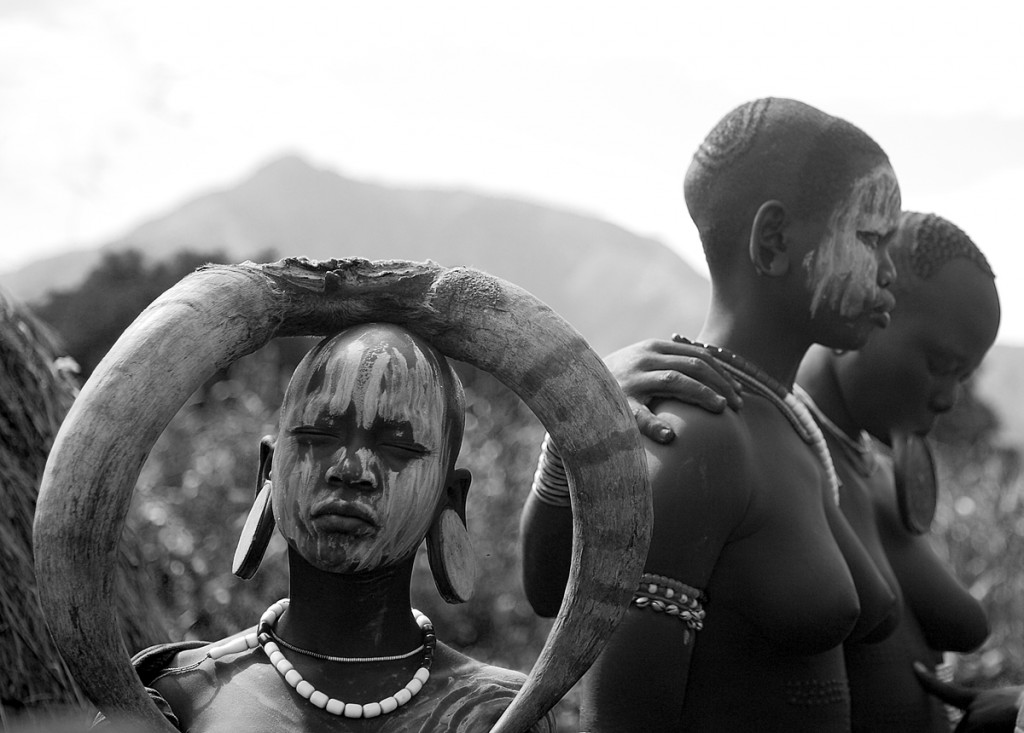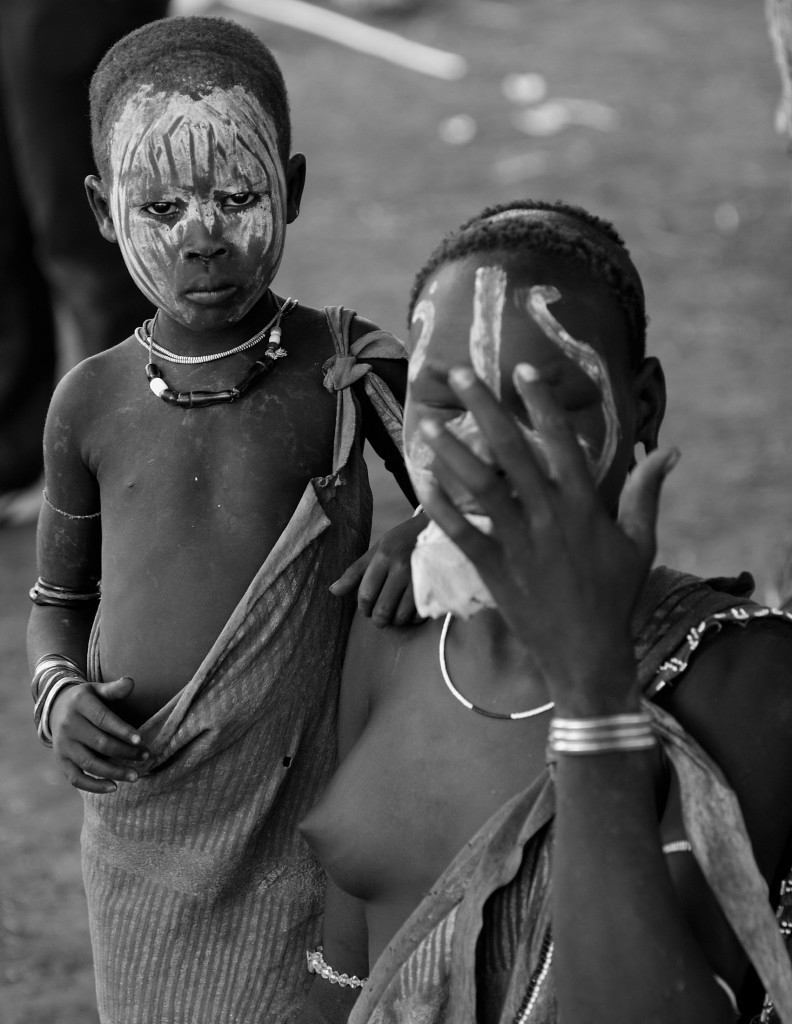Two Women, Two Tribes, and a Journey of a Lifetime is a 9-part series penned by Lim Ka Ea about her one year stint in Addis Ababa, Ethiopia where she accompanied her husband on his 9th humanitarian mission. No stranger to travel and humanitarian missions herself, she learned that Ethiopia is not really Africa and Africa is not really all about national parks or long distance-runners. She also learned that being a “tai-tai” is so overrated unless there is another “tai-tai” to get into mischief with. This 9-parter tells the story of how two “tai-tais” explored Ethiopia and discovered their life as both an individual and a woman.
Part I: My first encounter with Africa,
Part II: The faces, sounds and smell of Addis Ababa,
Part III: The gift of a kindred spirit
Part IV – Getting in synch with nature
Part V – Hardships and Friendship

Part VI – Our first sightings of the local traditional tribes
The Konso women were identifiable by their traditional cotton skirt with bright orange, yellow, red or green stripes, designed with an additional shorter layer of cloth around the waist. Due to the bright striking stripes and puffy design, some of the women reminded me of circus clowns minus the red rubber nose and afro wigs.
The men however, wear cotton knee-length shorts with blue, green or red horizontal stripes. The Konsos are well known for their cotton cloth, hand weaved by using traditional equipment similar to many other indigenous tribes in other parts of the world.
Both Konso women and men wear necklaces and bracelets made from fluorescent-coloured beads. Some of the women have tattoos or tiny bindi on their foreheads.
Konso boys have taken up commercial trading much earlier than other children we had seen along the way. Instead of shouts for Highland, they tried to sell us small wooden hand carved statues of naked men and women, possibly a poor attempt to replicate the real Konso wagas, carved wooden sculptures raised in honour of Konso warriors after their death. The boys also tried to sell us etan or incense made with plant resin in the shape and size of a ping-pong ball, used for coffee ceremony. Without knowing exactly what they were in the beginning, I thought they were some sort of animal dung, much to my momentary disgust.
As we re-energised ourselves with two cups of coffee at a local restaurant in Konso, we were slightly disturbed by a recorded religious Christian Orthodox programme being played over and over again on a television at the front of the restaurant. The programme showed voiced over sombre prayers set against the background of a bloodied James Caviezel being whipped, ridiculed and humiliated while carrying a giant cross, in his portrayal of Jesus Christ in the movie “Passion of Christ.” I think what had disturbed us most wasn’t as much as the gruesome images but the fact that all the other local customers were completely glued to the television, as if in some sort of a trance. Even I, a person who is a strong supporter of the freedom of religion, found such activity to constitute a form of religious brainwashing.
We gulped our cups of coffee and left the restaurant in a haste for fear of having to endure watching James Caviezel dies repeatedly.
Jinka Market – A close encounter with the Mursi tribe
After travelling for about 228km, we finally reached our second overnight destination in Jinka at around 3pm. Since it was still early, we took the opportunity to visit its famed vibrant Saturday market, where Banna, Ari and Mursi tribes gathered to exchange products. Jalalem introduced us to a young Banna man, Eyob (pronounced yo-bay), to show us around the market. When we were told that there were some Mursis at the market, we were overcome by excitement.
Irada, with her camera strapped around her neck, and I, marched purposefully down the road leading to the market.
Eyob, needless to say, was the first local person we met who speaks reasonably good English. In fact, he is working as a part time local guide in order to support his education. Unlike other traditional Banna men, he was dressed in long pants and judging from his educated background and critical opinions about the political situation in Ethiopia, he is far from being a quintessential Banna.
He provided us with many useful information, tips and advices about the Mursi to help us prepare for our much anticipated trip to the Mago National Park the day after. We were so impressed with his knowledge and communication skills that we hired him as our local guide to Mago.
According to Eyob, the Mursi are known for their fondness for araki, a strong and potent locally brewed alcohol. They love it so much so that their favourite past time includes drinking araki daily from noon onwards. For this reason alone, tourists have been advised not to stay with the Mursi community after 12pm in order to protect them from witnessing violent stick-fighting amongst the Mursi men, commonly incited by high level of araki intoxication.
He also told us that, in support of the government’s effort to reduce the level of alcoholism amongst the Mursi, tourists have also been advised not to give money to them, which are often spent on araki. Instead, basic commodities like soap, food and razor blades for their practise of lip-cutting, scarification and circumcision are encouraged.
Sure enough, we spotted a bald Mursi woman with her lower lip hanging loosely beneath her jaw, sitting at the front of the market enjoying her bottle of araki. It was the first time in our lives that we have ever seen a Mursi woman in person.
To be honest, I didn’t quite know what to make of it as I stood there, almost gaping with my own mouth hanging out and just stunned. Later on, I told myself that she was definitely the wildest-looking woman I have ever seen in my entire life. The fact that she had one eye, which we suspected was completely blind for the lack of motion and sparkle, made her looked a wee bit intimidating.

Mursi Woman was already tipsy from her expression and the way she sort of perked up with one of her breasts peeking obscenely from underneath her red cotton toga, as soon as she saw us approaching.
Irada asked Mursi Woman through Eyob whether she could take a photo of her and she was too eager to accept, without first receiving a payment of 2Birr for each photo. When Irada tried to take a picture of her baby, strapped onto her back, she dodged around with the agility of a skillful basketball player which could have fooled anyone about her sobriety level. She was trying to shield her baby from Irada’s lens unless she was given another payment.
Paying her twice was apparently insufficient because as we walked away from her, she shuffled after us and with one free hand, grasped my arm tightly, insisting for more photos to be taken of her. If I had a prosthetic limb, it would have come undone with the force she was applying but I would be happy to leave the limb behind and run off. Frankly, between Mursi Woman and I, I would have stood no chance of shrugging her off if Eyob had not come to my rescue.
With this, our eventual constant battle with the Mursi over money had started just like that.
Next: Part VII – Irada and Ka Ea in Mursiland
Irada Humbatova was born in Azerbaijan’s capital Baku on 12 July 1974. She trained and worked as a midwife from 1994 to 1997, later assisting the International Federation of the Red Cross/Red Crescent with maternal health work by training and supporting traditional birth attendants in rural areas. Since then she has followed her husband on Red Cross missions around the world, developing her love for photography into a passion and profession. Inspired by Africa’s immense beauty and its people’s suffering she moved from art photography to photojournalism. She has since grown to become Reuters’ stringer for Ethiopia and work on assignments for other news outlets and magazines. Irada is currently back in Baku continuing her work with Reuters. She contributes most of the photographs in this series.

Including the life of journey preparing the nature of traveling methods and including the more methods. This travelwkly site always developing the more learned the services for the judgement and facing trip.